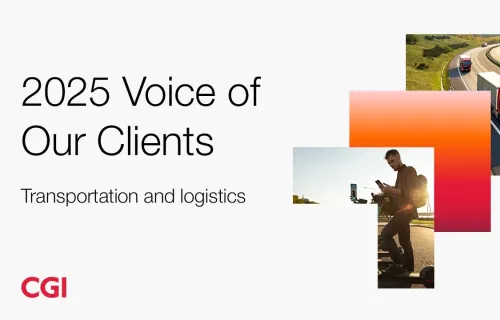The transport and logistics industry relies heavily on the business continuity of global supply chains and the freedom to transport people, goods and services locally and globally. With production decreasing dramatically in key manufacturing hubs, consumer demand falling, borders closing, and airlines, railways and ground transportation modes curtailed, the industry is facing an unprecedented time with far-reaching impacts.
In these extremely difficult circumstances, I am encouraged by the compassion and agility of so many in this industry to do everything they can to support healthcare workers and first responders and deliver critical supplies, while trying to mitigate impacts. Their effort, perseverance and commitment is an early sign of resilience for the industry as it moves from response to rebound when ready.
The pandemic adds pressure to an already stressed industry. Here are some of the projected impacts for 2020:
- In a best-case scenario, the OECD forecasts a 0.5% decrease in global GDP growth and up to a 2.4% reduction if the outbreak is not contained
- The International Air Transport Association (IATA) estimates a $113 billion impact on passenger airlines
- Growth in container shipping is expected to fall by as much as much as 4% for certain carriers, with some shipping lines estimating a drop in volumes by as much as 17 million TEU (twenty-foot equivalient). Key challenges are in the production, distribution and value chains.
Also given the uncertainty of the duration of the pandemic, these are very trying times for the industry. Despite having gone through a number of cost reduction initiatives over the past few years, declining revenues likely will spark a renewed focus on cost savings. With this in mind, I would like to share some practical approaches that transportation and logistics organizations can consider to help them respond and prepare for the recovery and beyond.
Reassess current systems and processes
One key approach is to revisit current processes, applications and systems to identify opportunities to reduce costs and add value to the customer and the organization to strengthen the ability to rebound. Supply demand and pricing processes in particular should be optimized further. This should include an enterprise-wide review of the application layer to reveal systems that are sparsely used and cost-ineffective. An example is a legacy system previously identified for decommissioning, but is still running because the data is used by other systems. In some cases, migrating the data might be a straightforward task to initiate so the system can be turned off. In other cases, a temporary solution such as hosting the legacy database could enable faster savings.
It is important to keep in mind that initiatives like application portfolio management and rationalization, as well as legacy IT modernization and even managing daily IT operations, often can be handled more cost-effectively through managed IT services.
Continue to invest in your digital strategy
Many transport and logistics organizations are in the midst of their digital journey. Continuing to stay true to their course in challenging times will be vital to reduce costs and better position for growth when ready to rebound. Examples include identifying ways to use advanced analytics and machine learning to increase revenues, such as applying predictive analytics to determine the likelihood of a customer cancelling a booking or becoming a no-show, and then taking proactive mitigation actions (offers).
Similarly, analyzing transactional data can help predict demand and capacity, which in turn can help set optimal pricing for future transactions, both in the short and long term. Once tested, machine learning algorithms can be developed and applied to automate complex and time-consuming processes. Advanced analytics also can be used to enable predictive maintenance of equipment, saving considerable costs for the carrier.
Prepare to rebound
Transport and logistics organizations also need to prepare to rebound. Recovery and growth strategies should include prioritizing target customers through data-driven segmentation. This will enable them to book capacity and products for these key customers as a priority, and to increase the supply gradually for the other segments as demand builds. To achieve this, aligning customer strategy with operational capabilities will be key.
These organizations also need to build intelligent and clear pricing strategies in all markets, based on a segmentation of the most valuable customer. Using data, they can drive analytical decision processes while leveraging price optimization solutions to deliver more value.
Similarly, developing products to meet all customer segment requirements, proactively anticipating curves and carefully monitoring pricing strategies, will nurture future profitable growth. A key success factor is to make sure the organization fully understands best practices for cost and price calculation.
Looking ahead
It will be interesting to understand how all of the changes will unfold, the lessons we can learn and the ways current challenges will reshape the industry in a positive manner. To be sure, reducing costs while increasing agility and data insights will continue as key areas of focus. If you’d like to continue this discussion, please contact me.





